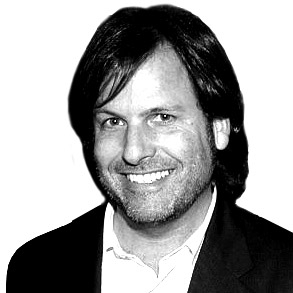Michael Caine was the Windsor knot that tied the look of Swinging London together. The British actor famous for his Cockney delivery (“ED-U-CATE-TING REE-TAH”), big-frame glasses (both shades and prescription), trench coats over three-piece suits (turtleneck or Windsor)—and most importantly, leading roles in classic films such as Alfie (1966), The Italian Job (1969), and Get Carter (1971)—was panache personified.
It was a look as on-point as the Sterlings and Colts he put to use in his breakout role as a military spy in 1965’s The Ipcress File—casually killer, effortlessly “live a little,” the James Bond we never had. Caine was a cool, cucumber-garnished Tom Collins seeking vengeance—or a lady friend—in the shipyards and tenements of South London.

His on- and off-screen persona is captured by the British photographer, and his close friend, Terry O’Neill, who died in 2019. A new coffee-table book about their relationship. Michael Caine: Photographed by Terry O’Neill, was written by film historian and professor James Clarke. It’s published this month by ACC Art Books.
Caine was a cool, cucumber-garnished Tom Collins seeking vengeance—or a lady friend—in the shipyards and tenements of South London.
Like Caine, who was born Maurice Joseph Micklewhite Jr. (he took his Hollywood surname from Humphrey Bogart’s The Caine Mutiny), O’Neill was already a name and a man-about-town in Swinging London. He’d famously shot some of the first early Beatles and Rolling Stones portraits, as well as Frank Sinatra and Paul Newman. Later, in the 70s, he shot two of the most iconic portraits ever taken of leading Hollywood stars: Faye Dunaway, in a silken bathrobe and stiletto sandals, lounging by the Beverly Hills Hotel pool at 6 a.m. on the morning after her 1977 Academy Award win for Network, newspapers scattered about her feet, her Oscar perched nonchalantly on a cocktail round. A swordsman and dandy like Caine, O’Neill was married to Dunaway from 1983 through 1987. And there was the now-indelible black-and-white of Brigitte Bardot, circa 1971, wind blowing her hair across her face, cigarette clutched in her sultry gap-toothed pout. Don’t-give-a-damn eroticism personified, it’s now an enduring image on cinematic memorabilia.

Though he had said he didn’t like getting chummy with his notable subjects, he couldn’t quit Sir Michael Caine. They were dirty, rotten scoundrels from the start. O’Neill was part fly on the wall, part actor-whisperer, a candid photographer who fell into being a shooter while applying to be a flight attendant. His career soared. Some of the book’s best and most candid photos reveal Caine dozing off between scenes, somehow still looking stylish in a recliner, mouth agape.
They were dirty, rotten scoundrels from the start.
The collaborative O’Neill film still shoots, off- and on-screen, would continue through four decades. Caine has made over 130 films, and won his two best-supporting-actor Oscars for later pictures—The Cider House Rules (as a kindly physician who reticently conducts abortions) and Hannah and Her Sisters (as a romantic accountant in arguably the best film Woody Allen has ever made). But it was his 60s and 70s canon that made him a style icon.
It didn’t hurt that one of his flatmates coming up in acting was Terence Stamp, and two of his closest friends were Roger Moore and Sean Connery. But the effortlessness of his collective getups was likely because his own Mount Street tailor, the late Douglas Hayward, was recruited for many of his best roles, most notably for The Italian Job, in which Caine (as Charlie Croker) declares, while strolling out of prison: “Take me to my tailor.”

The Italian Job (1969), in which Caine makes wardrobe changes at least a dozen times, could act as a sartorial-style guide on its own. Consider the light-gray sharkskin suit, the high spread collars, the silk neckties, the brown-and-yellow toweling robe, those gold cuff links, and even the slim-silhouette blue boilersuit “Charlie” and his team suit up in, in the film’s final cliff-hanging moment.
While Caine’s attire in films in the 70s and 80s leaned toward muted creams and caramels, he wore mostly minimalistic grays and darker blues in real life. Most of his tailoring had the same cut: shorter suit jackets, flat-front trousers tapered and neat to show off his ankle boots and leather loafers, body-hugging trench coats with a high-waisted belt, Turnbull & Asser shirt collars as wide and pointed as Tom Wolfe’s. Patterned Windsor ties. Stripes on stripes. Those turtlenecks, later to be embraced by Dick Cavett and Charles Grodin. Caine was order in chaos.
Then there were his specs, often hiding menace or exhibiting wily smarts and seduction theories in his films. Oliver Goldsmith custom-made the horn-rims he wears in studio-shot portraits by David Bailey in the 60s. Curry & Paxton, still operating, made most of his shades, giving Marcello Mastroianni a run for his money.
Throughout his 88 years, the still much-in-demand actor has never forgotten his roots. Substance over style, which is why it worked. What about that Cockney accent, once considered a handicap? As he once told CNN, “I kept it in order to let other working-class boys know that if I made it, they could do it, too.” If they only had learned how to dress the part.
Steve Garbarino is a New Orleans–based writer


